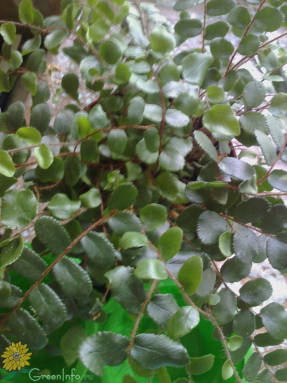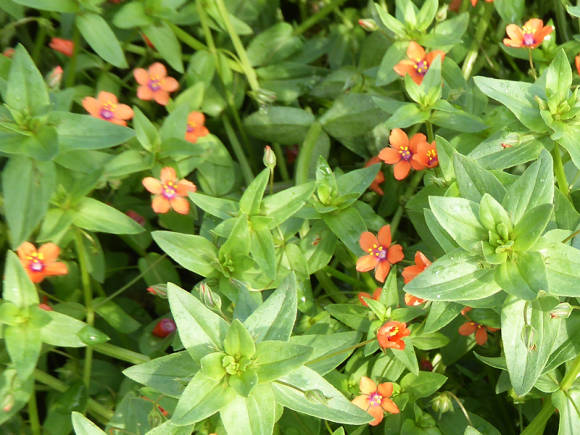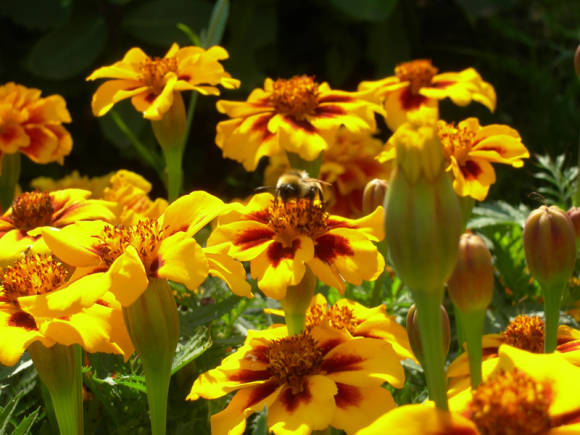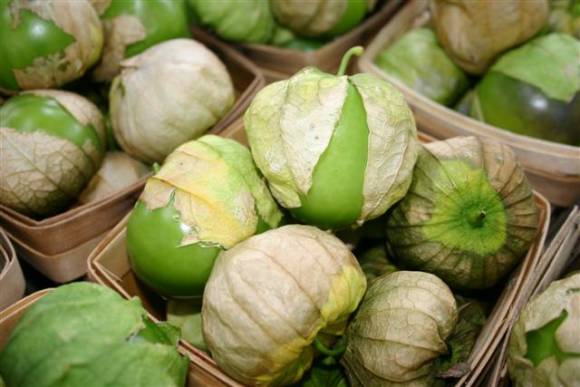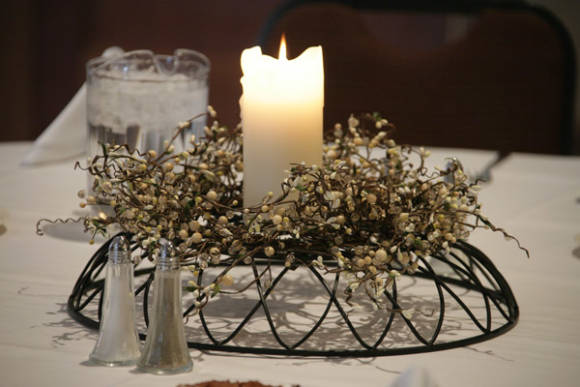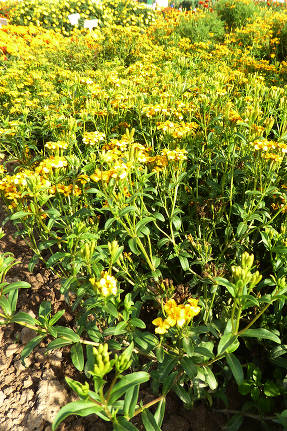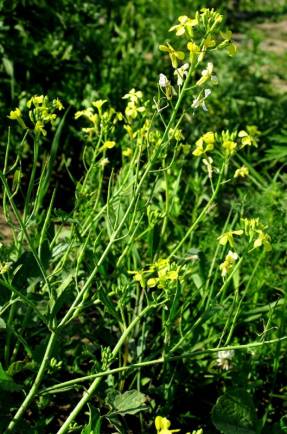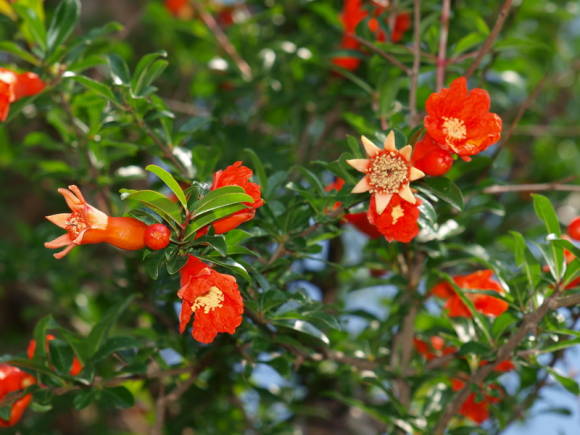How to collect and dry linden
 Collect inflorescences with bracts should be in the flowering phase, when half of the flowers have blossomed... When harvesting raw materials at a time when some of the flowers have already faded, it turns out to be of poor quality: when dried it turns brown, crumbles strongly and practically loses its smell. All this makes it of little use for consumption.
Collect inflorescences with bracts should be in the flowering phase, when half of the flowers have blossomed... When harvesting raw materials at a time when some of the flowers have already faded, it turns out to be of poor quality: when dried it turns brown, crumbles strongly and practically loses its smell. All this makes it of little use for consumption. The collection of raw materials can last from 10 to 15 days, depending on the weather and growing conditions (in shaded areas and in cool weather, linden blooms later and longer). To avoid damaging trees, it is recommended to use delimbers and large sliding ladders. Small branches of a linden tree with abundant flowers are cut with secateurs or knives, and then the flowers are cut off in a shaded place. It is forbidden to cut down and even more so to break large branches, as this leads to a weakening of the flowering of trees in subsequent years. Do not collect inflorescences that have not dried out after rain or dew, as they turn black or brown when dried.
Collecting color from trees within cities and near highways is strictly prohibited!
Linden blossom is a very delicate raw material and requires very delicate handling. If dried and stored improperly, it can be easily spoiled. You cannot keep it tightly compressed in bags even for several hours after collection. At the same time, it warms up and loses essential oil. After collecting the inflorescences with bracts, they are sorted and immediately laid out for drying in attics, under a canopy or in rooms with good ventilation, spreading in a 3-5 cm layer on paper, burlap or on shelves, nets, trellises. You cannot dry linden blossom in the sun! Under the influence of sunlight, the bracts quickly turn brown or redden. Linden can also be dried in dryers at a temperature of + 40 + 50 ° C. At a higher temperature, the essential oil intensively flies away and the raw material loses its wonderful aroma. Drying is stopped when the peduncles become brittle. Overdrying and inept packaging lead to loose delicate flowers.
The yield of dry raw materials is about 25% of the freshly harvested weight. After drying, inflorescences, branches and other impurities that are brown or damaged by insects and diseases are removed.
The finished raw material should consist of inflorescences with a predominance of blossoming flowers. Inflorescences are corymbose, from 5-15 flowers in cordate linden, from 3-9 flowers in flat-leaved. The flowers are yellowish, the bracts are yellowish-green or light green. The smell of raw materials is aromatic, sweetish, slightly astringent, with a slimy feeling. The presence of individual inflorescences is allowed, in which 1-2 small nuts just set up have appeared, and all other flowers are in a state of full bloom.
Aroma from oil and peace from flavonoids

Inflorescences with bracts ("linden blossom") contain essential oil (0.05%). It contains farnesol, which gives the lime tea a wonderful and unique aroma. Also found a triterpinoid - taraxerol, flavone glycoside hesperidin, other flavonoids (kaempferol, acacetin, afcelin, kaempferitrin, tiliroside, quercetin), tiliacin glycoside; saponins; tannins; carotene; vitamin C; mucus (up to 10%, the main part of which is arabinogalactan), as well as derivatives of caffeic acid. The inflorescences contain macronutrients (mg / g): potassium - 23.6, calcium - 16.9, magnesium - 3.0, iron - 0.2. Linden concentrates manganese and strontium. In addition, the glycoside tiliacin is contained, which acts on all types and possible variants of the influenza A virus, as well as has a diaphoretic effect.
Delicious flowers ...
Linden tea has long been appreciated in Russia. It was prepared from 15 g of flowers, infused with 180 ml of boiling water, drank with honey or sugar.
In official medicine they use infusion of linden flowers (Infusum florum Tiliae) - 3 tbsp. spoons of raw materials are poured into 200 ml of boiling water, heated in a water bath for 15 minutes, cooled for 45 minutes. and taken hot, 1-2 glasses 2-3 times a day after meals for colds.
Linden flowers have long been used in medicine in the form of a hot infusion as a home diaphoretic remedy for colds. To do this, finely chop the flowers at the rate of 1 tbsp. spoon in a glass of boiling water and insist for 20 minutes, filter and drink overnight. The dose can be doubled.

"Linden Blossom" is a part of sweatshop teas: 2 tbsp. spoons of flowers are brewed like tea in two glasses of boiling water, boiled for 10 minutes, filtered and drunk hot overnight 2-3 glasses.
However, when combined with other plants, it can be even more effective. An excellent diaphoretic harvest is obtained in combination with raspberries (1: 1), which are brewed similarly to the previous infusion.
As a diaphoretic for colds, linden flowers, scepter mullein and black elderberry are used in a ratio of 5: 2: 3. This fee is brewed at the rate of 1 tbsp. a spoonful of the mixture for 1 glass of boiling water, insist, filter and take 2 tbsp. spoons 4-5 times a day. It is recommended as a pain reliever for stomach cramps and as a diuretic for colic in the kidneys.
The water-soluble heteropolysaccharide in the experiment (on mice, rats, rabbits) has an anticoagulant prolonged effect with pronounced antihypoxic (increase the resistance of cells, primarily the brain to a lack of oxygen) and immunostimulating activity.
As other studies have shown, the water-soluble substances contained in the inflorescences, and not only in the experiment, show a pronounced inhibitory effect against the type A influenza virus of the antigenic variety From N 2 and Ho N 1 and infectious laryngotracheitis virus - can be used as a therapeutic agent for pneumonia of various etiology.
According to other sources, linden blossom was used as a diuretic, analgesic and anti-inflammatory agent. Recommended dosage forms from linden for pyelonephritis and cystitis, rheumatism, gout, stomach and intestinal cramps, renal stone and gallstone colic, and inflammatory diseases of the female genital organs.

Linden blossom is included in fees for hyperacid gastritis, gastric ulcer and 12 duodenal ulcer. Galenic preparations in the experiment have anti-inflammatory properties and stimulate repair processes, increase muscle strength and performance; infusion - blood clotting. It is recommended to drink linden tea for a long time for patients with atherosclerosis, against polyglobulia and excessive blood viscosity; the lime blossom is added to the mixture for the treatment of diabetes mellitus.
Linden flowers are included in anti-sclerotic tea. Infusion in folk medicine is used for postpartum purulent infections and fevers in the postpartum and postoperative period.
In the collection (infusion), linden flowers are added in the treatment of metabolic and hormonal disorders in the body, in particular, with arterial hypertension, diffuse toxic goiter, hypothyroid obesity, pathological menopause, diabetes mellitus.
Infusion with experimental alloxan diabetes has a hypoglycemic (sugar-reducing) effect; in severe alloxan diabetes, the infusion increases the survival rate of rats.
Outwardly, linden flowers were used for shampooing in case of hair loss; as a rinse - for inflammatory diseases of the oral cavity and pharynx; a decoction of linden blossom - for rinsing the throat with tonsillitis; for aromatic baths; in the form of lotions and poultices - for mastitis, ulcers, burns, hemorrhoids, joint pain. Infusion of flowers was used even for epilepsy.
Considering that there is a lot of mucus in the flowers, they have an analgesic, enveloping and soothing effect, they are added to other mixtures for the treatment of diseases of the stomach, liver, intestines, bladder and kidneys, urolithiasis, pain and cramps in the abdomen, rheumatism.
With measles mix linden flowers, cinquefoil goose grass, blackberry leaves and centaury grass in a ratio of 2: 2: 3: 3. Pour a tablespoon of the resulting mixture with 0.25 liters of warm water. In an enamel bowl, under a lid, gradually bring to a boil and simmer for 3-4 minutes. Insist 10 minutes, drain. Give children 2 tbsp. spoons 3 times a day.
With convulsions take 5 tbsp. tablespoons of linden flowers in 0.5 liters of water, boil for 30 minutes, drink 100 g 4-5 times a day. An alcoholic tincture of linden flowers has an even clearer anticonvulsant effect: take freshly dried raw materials (stale linden blossom does not give the desired effect), fill the jar with it without ramming, pour vodka to the very top, leave for 2-3 weeks. Drink a teaspoon of tincture 3 times a day. Before going to bed, increase the dose to a tablespoon.
With acute cystitis on the first day, take 3 tbsp. tablespoons of linden flowers, pour 1 liter of water, bring to a boil over low heat and boil for 2-3 minutes. Insist 1 hour and drink during the day. From the second day, take 0.5 liters of this infusion.
useful coals ...
Linden charcoal was used internally for poisoning, flatulence and diarrhea. It is an excellent anti-rot. Meat, sprinkled with coal powder, stops rotting and regains its former freshness. They also cleaned the water for them. Coarse coal and a little sulfuric acid were poured into the spoiled water - the water became clear. Charcoal was given internally for scurvy and scurvy spoilage of the gums, bad breath, and belching. Took 1 teaspoon of pure charcoal powder with water 2-3 times a day.
Even tooth powder was prepared from lime charcoal: oak bark, gravilate root and alum were added to lime charcoal. You can make a powder with honey from coal. This remedy is used as an external remedy for festering and poorly healing wounds.
... and everything else

Crushed to a dough consistency buds or pulp from cambium of linden bark (also boiled young bark) is applied to burnt places, hemorrhoids, abscesses, compresses are made from them for mastitis, on sore spots with gout. In the literature, there is an opinion that linden buds are even suitable for food after cooking. But tastes differ.
If you feel fear, anxiety and the dominance of gloomy thoughts, especially before the exam, glycerin macerate from linden buds can help. Fresh linden buds must be crushed in a mortar, insisted in a ratio of 1:10 in a mixture of glycerin, alcohol and water prepared from equal parts of the indicated components. The infusion is taken 20-30 drops 3 times a day.
Linden bark has long been used as an anti-inflammatory and analgesic agent for arthritis. They collected it from young, 2-3-year-old branches. The bark collected from old branches and trunk contains few useful substances, and it makes no sense to use it for medicinal purposes. Linden bark was boiled in water until mucus was obtained - 15 g of fresh bark was taken and boiled in 240 ml of water. It was applied for burns, gout, accompanied by severe pain. This mucus was also applied to the hemorrhoidal cones, which relieved the pain. It was recommended to drink wine decoction of linden bark during consumption (2 cups a day).

With a tendency to bleeding from the nose, with cuts and wounds, use infusion of nuts on wine vinegar. To do this, you need to crush the "nuts" and pour wine vinegar in a ratio of 1: 5-10. Insist 5-7 days, drain. Use to stop bleeding in the nose on a piece of cotton wool or bandage.
Bast in the old days it was recommended for pulmonary tuberculosis and diathesis.
Crushed leaves used by imposing on inflammatory tumors (in modern terms - abscesses), breast, burns.A decoction of the leaves has long been used for dysuretic phenomena.
Extracts from linden roots experimentally have anti-influenza properties (against viruses A, A (WSN), A-2) and are of interest for further testing of their activity against other models of viral infections.
Linden - not "lime" beauties

Linden flowers are also used in cosmetics. For example, they are included in effective preparations for age-related aging of the skin of the face and neck. Apply a hot compress with infusions of hop cones, sage leaves, linden flowers, chamomile in equal parts with the addition of 10% tincture of eleutherococcus, ginseng or broth of buckthorn bark. The method of carrying out hot compresses is as follows: 5-8 layers of gauze are dipped into a vessel with a hot infusion of these herbs, lightly squeezed and applied to the face, previously cleansed and lubricated with nourishing cream. As the compress cools, the procedure is repeated again. After the hot compress, the skin is rinsed with cold water and a nourishing cream is applied.
In cosmetics, a decoction of crushed linden flowers is also used - 2 tbsp. tablespoons of flowers insist on 1 glass of boiling water for 20-30 minutes. The strained mass is used to wipe the face with oily skin. It was also used for alopecia, or, more simply, baldness, rubbing into the scalp.
From a thick mass of 1 tbsp. tablespoons of chopped linden flowers, poured with 0.5 cups of boiling water and steamed for 5 minutes over low heat, make face masks, with oily skin - warm, with dry - cold. After 15-20 minutes, the mask is removed, the face is washed with water and the dry skin is lubricated with a fat cream.
For oily skin, it is recommended to add a little almond seed to the linden flowers. Such masks are repeated every other day for 1 month.
Tuzik and Burenka
As a medicine, lime blossom is used in the treatment of animals.
Infusion or mixture in veterinary medicine - diaphoretic, diuretic, expectorant, tonic, antibacterial. Infusion (1:10) is prescribed as a diaphoretic, diuretic and general tonic in doses: cattle - 5-15 g, horses - 2-10, sheep and goats - 2-5, pigs - 1-2, dogs - 0.5-1.0.
But the benefits of linden can be not only in this. The plant has high antibacterial and phytoncidal activity and is recommended for landscaping not only city parks, but livestock complexes. It is noted that this contributes to a lower incidence of diseases in livestock.
